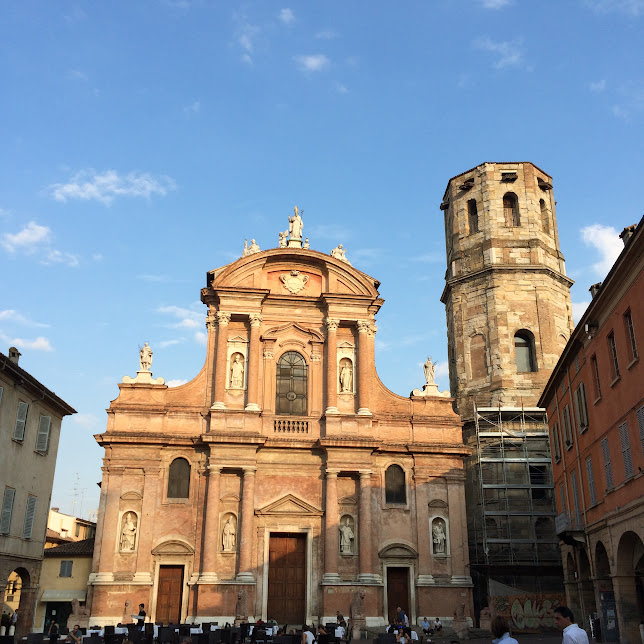
Reggio Emilia, a vibrant city in the Emilia-Romagna region of Italy, is a treasure trove of historical wonders, cultural delights, and culinary experiences. With its rich heritage and contemporary charm, a 24-hour visit to this city promises a journey through time and taste. Here’s how you can make the most of your day in Reggio Emilia.
Morning: Tracing the Roots of the Italian Tricolor
Start your day at the heart of Italian history in the Sala del Tricolore at the Palazzo Municipale. Reggio Emilia is known as the birthplace of the Italian flag, where on January 7, 1797, the tricolor was adopted as the emblem of the Cispadana Republic. The Sala and the adjacent Museo del Tricolore, which offers free admission, provide a fascinating insight into the history of the Italian flag, intertwining with contemporary art and creativity. This iconic spot sets the stage for understanding Italy’s journey to unity and independence.
Late Morning: Discovering the Palazzo dei Musei
Next, visit the Palazzo dei Musei, a recently renovated space designed by architect Italo Rota. This museum complex takes you on a journey through centuries of local and regional history. From the Roman founder Marco Emilio Lepido to the poet Ludovico Ariosto, and from the Este possessions to the photographic works of Luigi Ghirri, the museum encapsulates the essence of the area’s rich cultural heritage. Don’t miss the impressive “Curiosa Meravigliosa” photomosaic on the facade of Via Secchi, a stunning piece of art made from over 12,000 photographs.
Early Afternoon: The Baroque Wonder of La Ghiara
The Basilica della Ghiara, a marvel of baroque architecture, is your next destination. Built in the late 16th century following a miraculous event, the basilica houses an extraordinary collection of frescoes and altarpieces by prominent 17th-century Emilian artists like Ludovico Carracci and Guercino. The adjacent Chiostro Grande and Chiostro Piccolo add to the grandeur of this religious site, with the latter hosting the Museo del Tesoro della Basilica della Ghiara.
Mid-Afternoon: A Contemporary Art and Photography Tour
Reggio Emilia’s contemporary spirit comes alive in the streets. The city’s thriving modern art scene is evident in its public art installations by renowned artists like Luciano Fabro and Sol Lewitt. The “Fotografia Europea” festival, a major event for contemporary photography, transforms various city locations into vibrant exhibition spaces. A short distance from the city center, the Collezione Maramotti offers an impressive collection of contemporary art, housed in a former Max Mara fashion production facility.
Late Afternoon: Architectural Marvels by Santiago Calatrava
Experience the contemporary architectural genius of Santiago Calatrava. His white arching bridges have become the new city gateways, symbolizing Reggio Emilia’s leap into the 21st century. The nearby Mediopadana High-Speed Train Station, a stunning structure of white steel and glass, is another testament to Calatrava’s architectural prowess and is considered one of the most beautiful train stations in the world.
Evening: A Culinary Experience with Erbazzone
As evening sets in, indulge in Reggio Emilia’s culinary specialty – Erbazzone. This savory pie, made with spinach, chard, ricotta, onions, and Parmigiano Reggiano, is a staple in local cuisine. With variations across the region, each version maintains its uniquely Reggian flavor.
Night: Strolling Through the Historic Piazzas
Conclude your day with a leisurely stroll through the historic piazzas of Reggio Emilia. The city’s urban fabric comes alive in these public spaces. Piazza Prampolini, with the Cattedrale, the Municipio, and the Sala del Tricolore, is a must-visit. Piazza San Prospero, Piazza Martiri del 7 Luglio, and Piazza della Vittoria each tell their own story of the city’s past and present. Piazza Fontanesi, once a bustling marketplace, is now a lively spot filled with cafes and gastronomic shops.
Closing Thoughts: A City of Inclusivity and Creativity
Reggio Emilia is a city that embraces everyone – from families to solo travelers, from history buffs to art enthusiasts. The city is home to the Centro Internazionale Loris Malaguzzi, dedicated to innovative educational approaches, and the Fondazione Nazionale della Danza-Aterballetto, a testament to its commitment to the arts. With its bike-friendly streets and scenic parks, Reggio Emilia is not just a destination but an experience, a place

